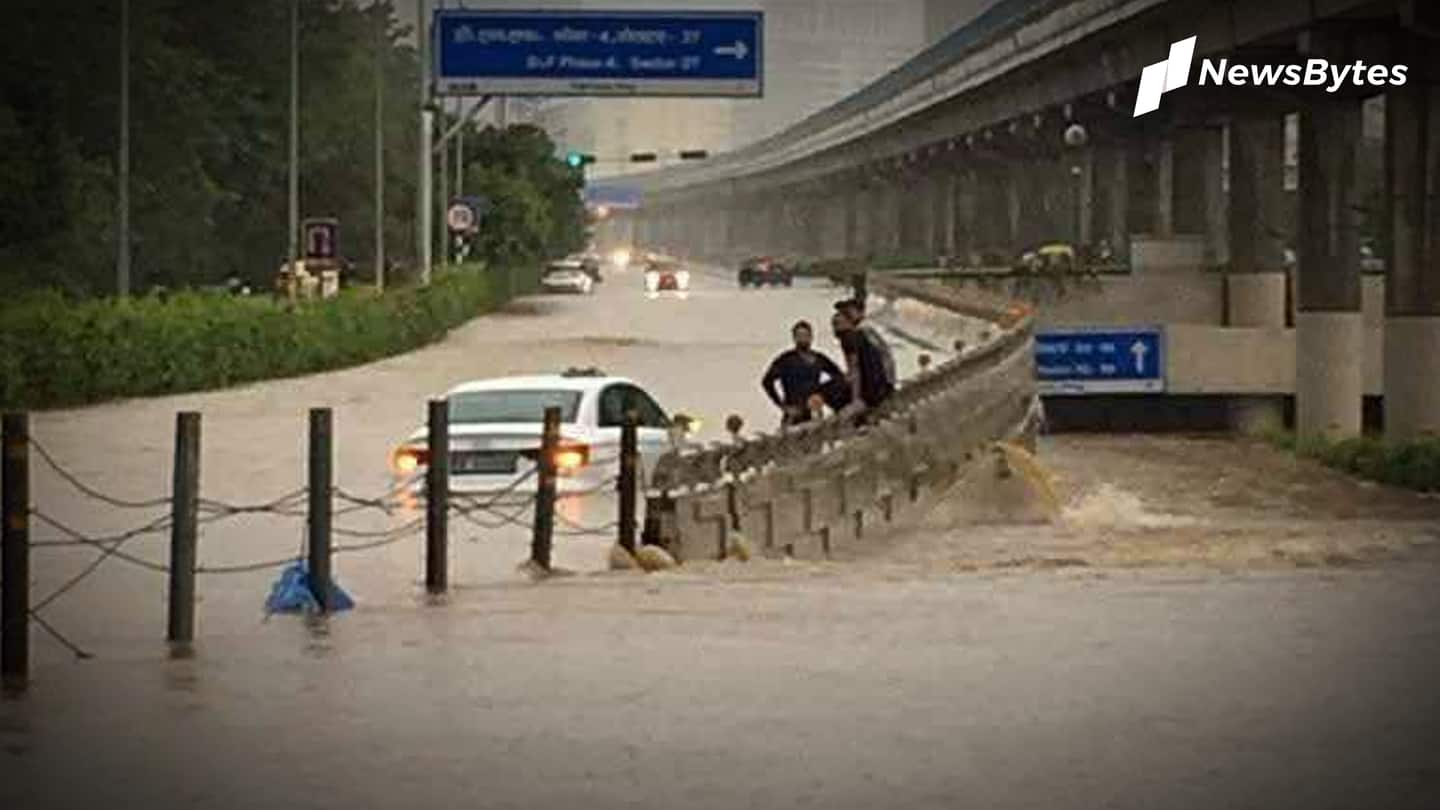
Rainfall sinks Gurugram: Understanding why the horror returns every year
What's the story
On Wednesday, residents of Gurugram remained pleased when they saw skies, as rains lashed the Haryana city, but were equally distressed on seeing the roads, which were water-logged and told tales of crumbling infrastructure.
Cars floated in the water, buildings were flooded, sparking anger among residents who slammed the administration.
Sadly, this is a recurring problem every year. Let's understand why this happens.
What happened
What exactly happened in Gurugram yesterday?
In the 24 hours ending at 8:30 am yesterday, the Haryana city received 23 mm rainfall, and it recorded another 95 mm of rain in the next three hours or so.
The rainfall, "six to seven times" more than expected, was enough to flood Gurugram's streets. Even upmarket localities, like Golf Course Road, weren't spared; posh cars were ravaged by the rains, and people "swam" to reach safer spots.
Details
Noida also received rainfall but didn't suffer as much
Now, the rains also gave content creators much to joke about, but the ones who suffered could only shed tears seeing their beloved cars float in dirty waters.
In sharp contrast to Gurugram, another "smart city" Noida, which is also close to Delhi, didn't report as much water-logging.
Noida reportedly received 70 mm of rain but incidents of water-logging and traffic snarls weren't prominent.
Difference
Like Noida, Gurugram isn't planned. This explains a lot!
Shedding light on the difference between the two most-known cities of NCR, SC Gaur, chief coordinator and planner with the UP national capital region cell, told HT that Noida is planned and authority looks after roads, drainage networks, etc.
However, in Gurugram, a "developer buys land from a farmer, develops a township, lays infrastructure inside the township, and empties rainwater outside the campus."
Statement
Another expert said all planning about Gurugram remains on paper
Another expert named Rajvir Singh, who was the chief town planner in Haryana, said urban planning failed Gurugram numerous times. Initially, it was decided to let natural drains and dams be, but no one paid attention.
"Real estate development was allowed in a haphazard manner. Also, despite a master plan for the city, most of the features remained on paper," Singh disclosed.
Reason
Impaired British-era dams and builders' greed also contributed to crisis
A TOI report also pointed out that damaged dams are to be blamed for the floods, claiming that dozens of them need to be repaired urgently.
The fact that authorities didn't come down on builders when they filled water-bodies to build high-rises, or when they constructed roads on water path, also played a role in the current situation.
This was a crisis in making.
Drain
As Badshahpur drain flowed in full capacity, problems were multiplied
Gurugram was also a victim of "back-flowing" water yesterday as the main drain — Badshahpur drain — was flowing in full capacity. Hence, it became impossible to pump the rainwater out.
This, despite the fact that the Haryana administration spent nearly Rs. 300 crore on widening the aforementioned drain and another Rs. 80 crore for maintaining the master drains.
Location
Gurugram's location is also a contributing factor
Gurugram's location also doesn't help its cause. Located at the foothills of Aravali, the city is bordered by Gwal Pahari to the east, at a height of 290 meter, and Najafgarh on the west, whose lowest point is 200 meter.
This difference of 90 meter allows rainwater to enter the low-lying areas.
While not much can be done about topography, the infrastructure can be fixed. The question is: Why hasn't that been done already?